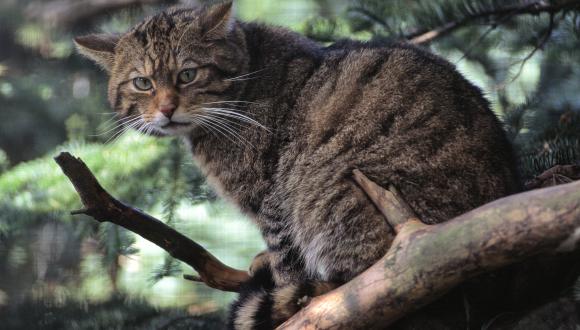Bats and licensing
NatureScot can license certain activities to permit actions that might otherwise constitute an offence against bats or their roosts.
All bat species found in Scotland are classed as European protected species. They receive full protection under the Conservation (Natural Habitats, &c.) Regulations 1994 (as amended). Find out about bats as protected species.
The protection extends to bat roosts. A bat roost is any structure or place that a bat, or group of bats, uses for shelter or protection. As bats return to the same places every year, a bat roost is protected even if no bats are present.
Basic bat surveys don’t require a licence, but you’ll need one to handle or ring bats, or to enter roosts.
Homeowners will require a licence to exclude bats that are causing significant problems in a house. You must also be licensed to carry out minor home repairs or alterations that might affect bats in a property.
A licence can permit planned development works that might affect bats or their roosts to proceed legally.
Most land management practices are unlikely to affect bats or their roosts. But you should apply to us for a licence if your work could otherwise result in an offence in relation to bats.
We may issue a licence to permit tree works where a bat roost is present and no alternative is possible.
We can issue licences for the possession of bats for scientific, research or educational purposes.
You don’t need a licence to:
- tend a disabled bat
- kill a seriously injured bat
- remove bats from the living area of a house
Use of Safe Roofing Membranes
When seeking a licence to enable the installation of a new roof membrane in a roof structure where bats are known to roost, you must include a certificate that proves the roofing membrane has passed a ‘snagging propensity test’ if you’re using a non-bitumen coated roofing membrane.
A snagging propensity test checks that the membrane can stand the repeated snagging actions of roosting bats. To pass, a membrane must show no change in the average number of loops per cm² as rotations are increased from 0 to 1000.
You do not need a certificate for bitumen 1F felt that has a non-woven, short fibre construction.
Use of Night Vision Aids for Bat Surveys
We would like to raise awareness amongst bat ecologist applying for licences from NatureScot of the “Interim Guidance Note: Use of night vision aids for bat emergence surveys and further comment on dawn surveys Bat Conservation Trust, May 2022” now published on the Bat Conservation Trust Website.
This Interim Guidance Note aims to provide clarification regarding the role of night vision, infrared and thermal imaging cameras (night vision aids or NVAs) in bat emergence surveys. It also relaxes the current requirement for dawn surveys where the quality of emergence surveys is improved by the use of night vision aids. The note has been produced in lieu of the publication of Bat Surveys for Professional Ecologists Good Practice Guidelines 4th edition, now predicted to be later in 2022. The note supersedes the 3rd edition (Collins, 2016). The text has been prepared by Bat Conservation Trust (BCT), discussed and agreed with the Statutory Nature Conservation Body (SNCB) mammal specialists and the Technical Review Board for the 4th edition of the survey guidelines have also been given the opportunity to comment.
When published the 4th edition of the Survey Guidelines will shift the emphasis to using NVAs as a standard protocol, rather than as an optional or complementary method for both building and tree bat emergence surveys. There will therefore be a move towards NVAs being used on all emergence surveys, with justification required in consultant’s reports as to why they have not been used, if this is the case.
Contact
If you already have a licence number, include it in the subject line of your email, or have it to hand when you call.





